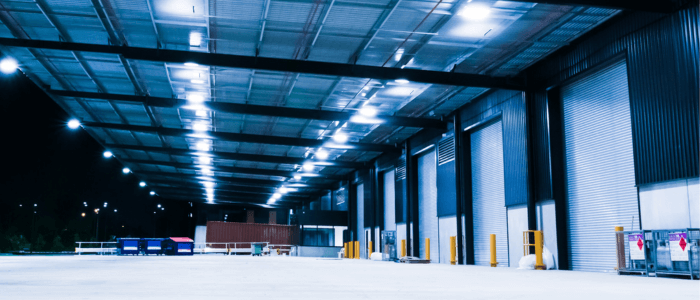Housing prices are going up, interest rates are at an all-time low and a push towards build-to-rent (BTR) has emerged. With housing affordability issues, some Australians being priced out of the market and others not wanting to move to more affordable locations, the build-to-rent option is becoming a very welcoming option for many investors and tenants alike.
Build-to-rent (BTR) is basically housing on a very large scale. Units that are rentals which are held under a single ownership that is managed professionally ie the developer/investor owns all of the units rather than the developer building-to-sell the units individually.
Institutional investors such as super industry funds (ie AustralianSuper) are fast becoming involved and investing in the build-to-rent sector. When the investor retains ownerships and management of all of the units it produces a steady income, significant tax benefits and reduces per unit construction cost through the use of economies of scale.
The BTR developments are built with high quality finishes, with communal facilities – gymnasiums and pools, as they want to have tenants there for long period of time and the finishes need to be durable. Tenants of these BTR buildings are prepared to pay a higher rent to have a higher quality rental, long term rental security and their preferred locations.
Build-to-rent has been ramped up due to COVID-19 with over 3,000 units added to the pipeline in 2020 to stimulate the sector. As per JLL:
JLL figures show 258 units have been completed in 2020, with a further 2,570 under construction with expected completion dates spanning over the next three years. There are an additional 2,000 units with plans approved having expected completion dates through to 2024.’ Click here for more information.
“We believe that this will not only be a good thing to keep construction ticking over, but it will be a great outcome for renters and provide some good quality rental options in a few years’ time when options would otherwise be very limited. It will also give investors relatively stable investment opportunities outside the already crowded traditional commercial property markets,” said Mr Leigh Warner JLL’s Head of Residential Researh – Australia.
What are the benefits of build-to-rent?
The build-to-rent asset class does have many benefits, it will create affordable living for people in major cities who want to be closer to the universities, hospitals, airports so they are not travelling hours to access the facilities they need to.
The scheme also allows for the fund investors to own a small piece of these solid assets at the fraction of the cost of investing in a whole property by themselves.
Institutional funds are seeking longer tenant agreements which means tenants have stability and not worrying about when the property will be sold. Which in return means reliable income to the institutional fund with a reduced risk of lost income when the property is on the market or in between shorter leases.
What are the downside to build-to-rent?
For developers it was the claim on land tax and GST. When the build-to-rent scheme was first introduced they could not reclaim the GST from the construction cost tax from tenants this was only available to developers of build-to-buy. However, the NSW government and VIC government is introducing a land tax discount for new build-to-rent housing projects.
As per the NSW government:
Land Tax Build to Rent
The NSW Government is introducing a land tax discount for new build-to-rent housing projects until 2040 and a new Housing Diversity SEPP to provide more housing options, greater surety for renters, boost construction and support jobs during the COVID-19 recovery.
The Treasurer has now released the guidelines for the land tax reduction for build-to-rent properties, announced last year.
What this means
Eligible Build-to-Rent (BTR) properties will receive a 50 per cent reduction in land value for land tax purposes. The effect of this is that land tax will be reduced. BTR developments will also receive an exemption from foreign investor duty and land tax surcharges (or a refund of surcharges paid).
Key Facts
- The Treasurer’s guidelinescontain the eligibility requirements
- The concession from foreign investor surcharges extends upon the existing exemption for build-to-sell developments.
- These concessions apply to BTR developments that commence construction after 1 July 2020.
- The concession is available from the 2021 land tax year.
- A significant proportion of the construction labour force hours must involve work by certain classes of workers: apprentices, trainees, graduates, long term unemployed workers, workers requiring upskilling, workers with barriers to employment or Aboriginal job seekers.
- The concessions are provided until 2040.
- Developers that subdivide within 15 years of receiving the concessions will be required to repay the benefit.
How is rental property depreciation applied to build-to-rent?
The owners of the build-to-rent development will be able to claim the residential property depreciation for all of the brand-new units as they are income producing. The property depreciation deduction for complexes of this size could be potentially in the millions.
A residential depreciation schedule will need to be organised to claim the property depreciation. As with all other investment properties, claiming the property depreciation on the build-to-rent development will reduce the taxable income and these brand-new builds generally produce the most residential property depreciation deductions available.
Property depreciation claims can be made over all of the fixture and fittings ie air conditioning, carpet, appliances and for the structural part of the complex ie driveways, walls, pools.
Any property that is income producing whether brand-new or existing has the potential to claim residential property depreciation.
If you would like a quote for your build-to-rent development, residential house or unit, or commercial property give us a call on 1300 922 220.








